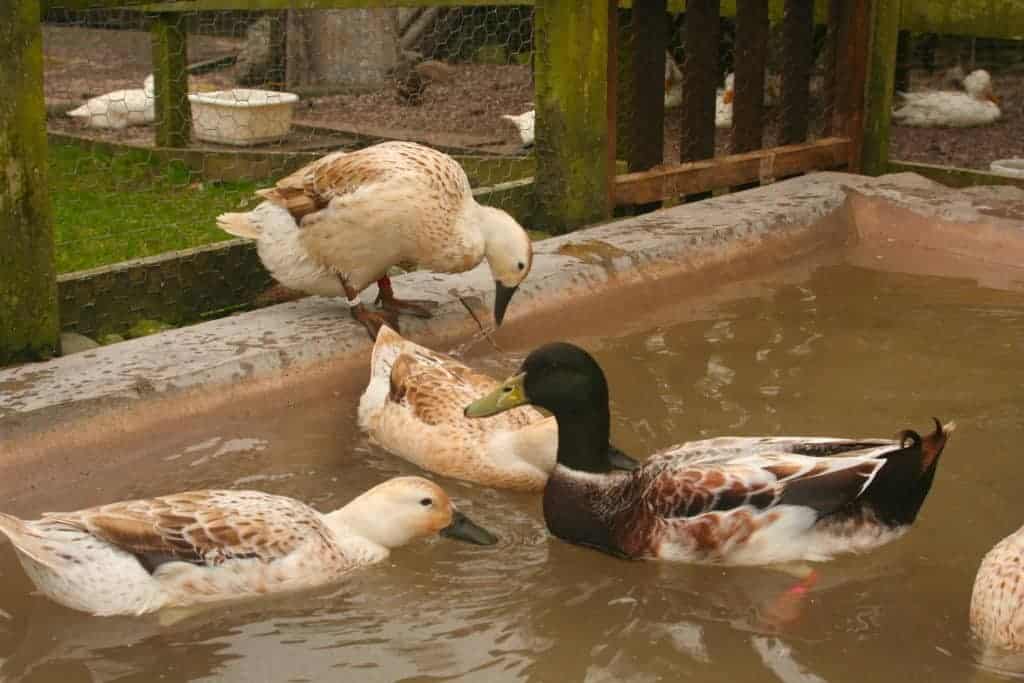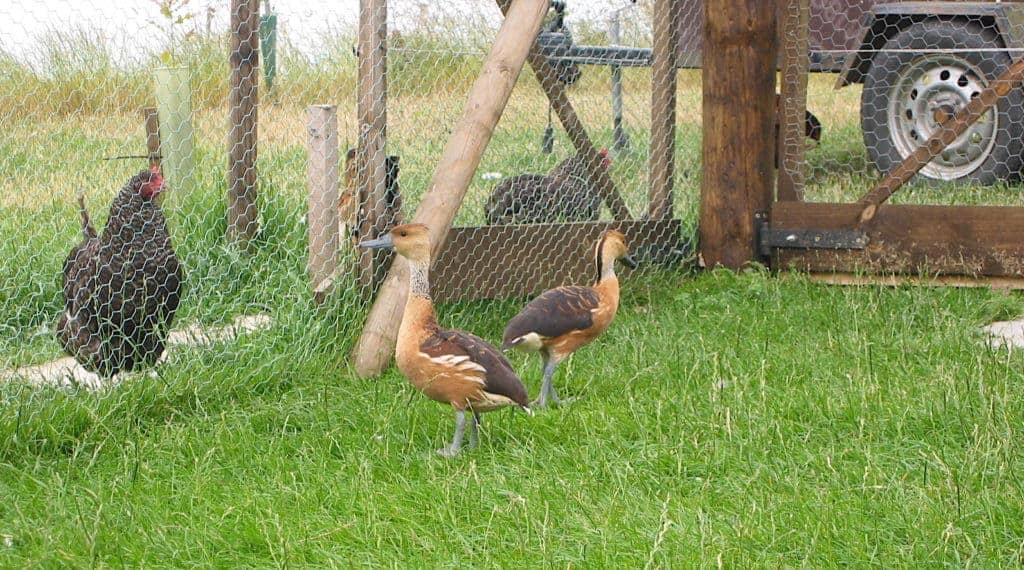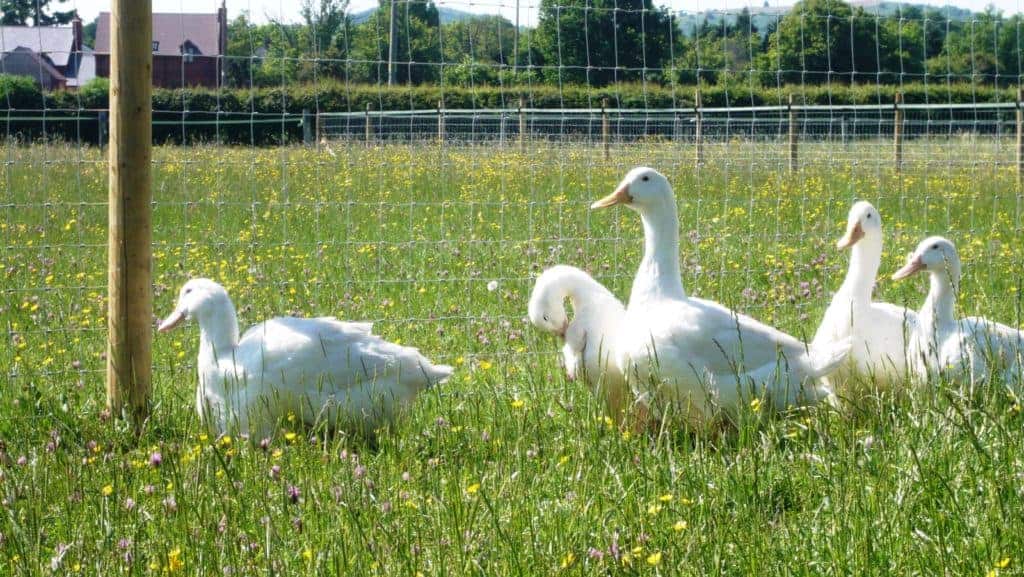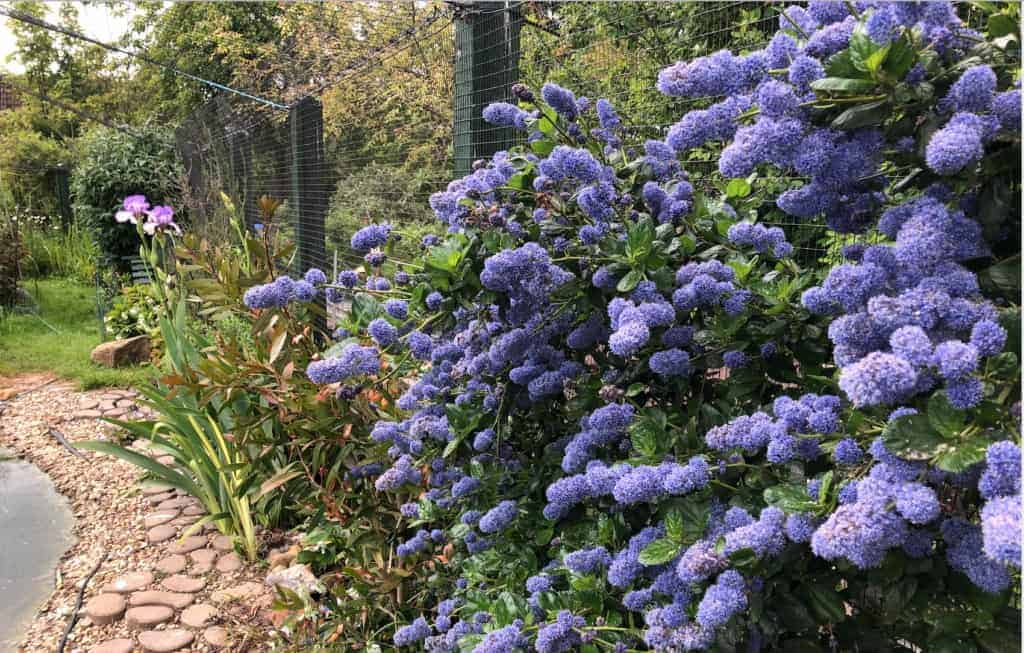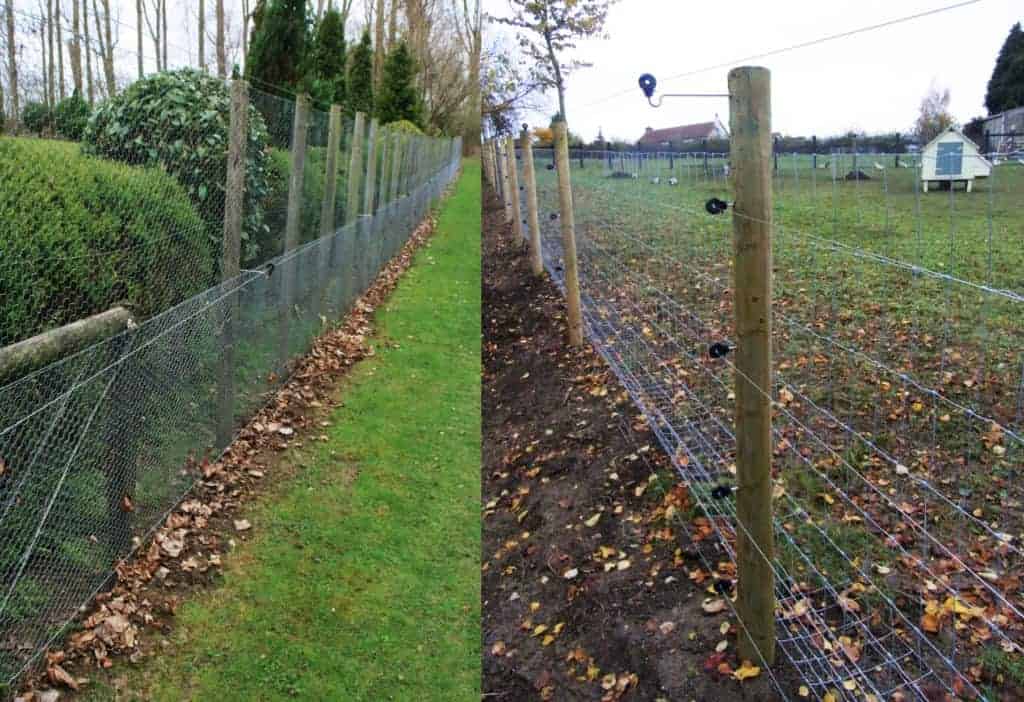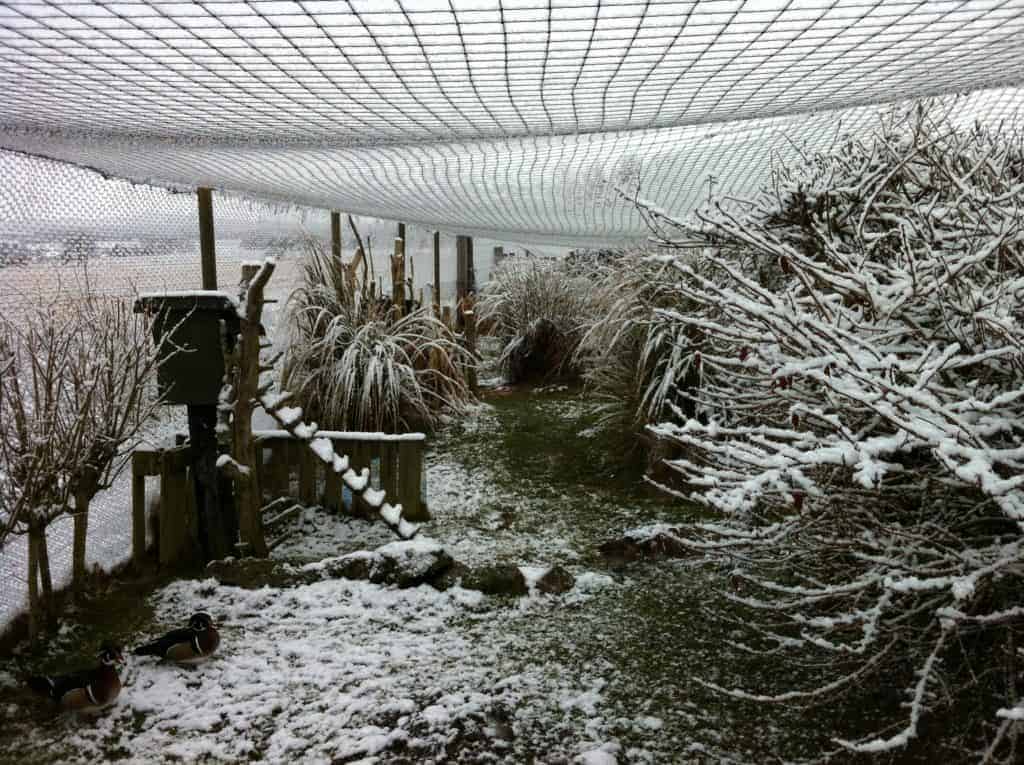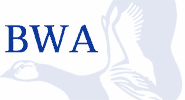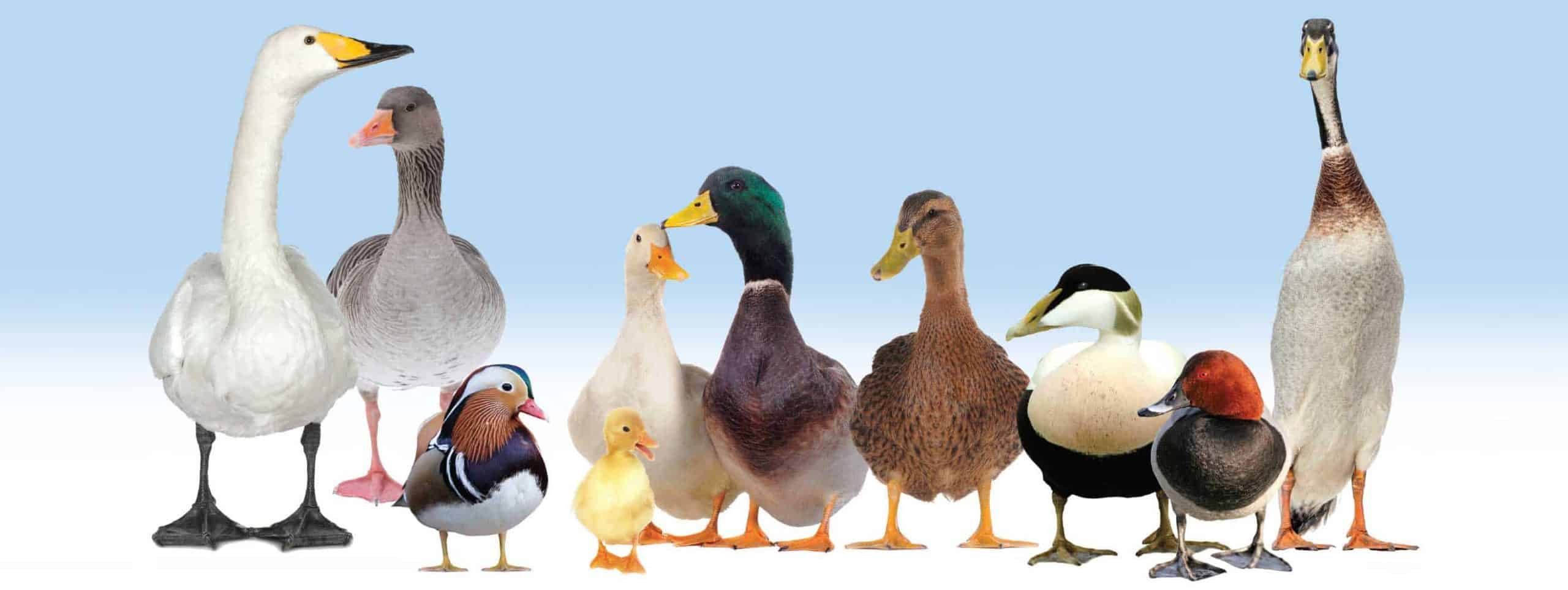The answer has to be that if you breed waterfowl with a view to obtaining birds of a particular type, then, like it or not, you are applying genetics. You are accepting that your birds are able to pass on features (in the form of genes) to their offspring, and that, by breeding only from those birds with the characteristics you want, you will ‘improve’ the next generation. By getting your head round some of the basic principles, you can save yourself a lot of time and hassle by realising what is or is not possible. If you are purchasing birds, you should be confident that the breeder has applied basic principles so that the birds you are buying are as you expect.
All domestic animals have been developed from wild ancestors by human intervention. Our domestic ducks, with the exception of Muscovies, are descended from the wild Mallard. The differences we see now have come about by mutations – random, rare changes in genes from those producing mallard characteristics, which humans have seized upon to breed selectively. In the wild, odd genes would disappear into the mass or the birds carrying them would be easy prey to predators, but in captivity they have been artificially selected for, and not only maintained, but combined in new ways, resulting in the wide range we see today.
So how does it work? Each living thing (including ducks) has a number of pairs of chromosomes in each cell of its body, carrying thousands of genes — one set from its father and one set from its mother. Since any duck receives one gene for a particular character from each parent it must have two genes for any character. Different versions of a gene are called alleles. Taking the simplest possible scenario, if these two alleles are the same, (called homozygous) there is no problem, the alleles will decide the feature and will show in that organism. If they are not the same (heterozygous), there are two possibilities. Often, one allele (the dominant one) will show itself (be expressed) and the other (recessive) will be hidden.
For example, the black colour seen in Cayugas, Black East Indians and others is caused by an allele that is dominant over the normal wild-type colour. If we use the letter E to represent the black, and e to represent the recessive wild colour, we can see that a black duck could be either EE or Ee, but a wild colour bird could only be ee. When these birds go on to breed, the homozygous black (EE) can only pass on E alleles, the wild type can only pass on one e allele, but the heterozygous can pass on E or e alleles. Thus, it would be quite possible that two black ducks could produce wild-type offspring (unless you could be sure they were EE) but virtually impossible for two wild-type birds to produce black offspring.
In other situations, one allele is not dominant over the other, so that if the alleles are different (heterozygous), the result is a form like neither parent but somewhere between, or different from either. This is called co-dominance. An example of this is blue colour, as in the Blue Swedish, where the blue results from two alleles being different, the homozygous situations giving Black and Splashed White. Only 50% of offspring from two Blue Swedish will be like their parents. The only way to get 100% Blue is to cross a Black with a Splashed White! Thus, it will never be possible to breed pure Blue Swedish, and it actually raises the question about whether this can be considered a true breed at all. A get-out here is that the inheritance in blue birds is at least predictable!
The single gene situation is not the norm — many characteristics are the result of a number of genes acting together, often one gene modifying the effect of another (such as dilution genes), so that it is often far harder to see the underlying principles at work. In addition, since there are colour differences between male and female ducks, there is the added complication of sex Iinkage.
Only 22 mutations in domestic ducks have been described so far — there is obviously much more work to do. Mike Ashton has given much more detail of the mechanisms of inheritance of some of these genes, in his articles in Waterfowl and in his and Chris’s book, The Domestic Duck. I am not proposing to repeat his work here, but to urge duck breeders to think about the mechanisms underlying their breeding programmes, to try applying some basic principles and to share information with others to add to the body of knowledge available. It would be especially useful to keep track of the numbers of different forms obtained from particular pairings.
There are two possible issues arising from a lack of regard or understanding of the underlying principles. Sometimes all colours of Calls, for example, are run together. Offspring are chosen which happen to correspond to show standard criteria for a particular colour for exhibition and sale and a great disservice is being done to that colour. In all probability the birds will have a number of recessive alleles which are not expressed but will show up in successive generations. In other words, despite appearances, they are cross-bred and will not breed true.
Another issue is from random crossing, where a colour of duck appears which is novel and which the breeder likes. It is easy to assume to assume that, by successive breeding and selection, eventually a pure-breeding line can be produced. In all probability, the ‘new’ colour only exists when a gene or probably genes, are heterozygous, in other words ‘split’, and a pure-breeding form will never be possible.
So, if you’ve never thought about the mechanism of inheritance in this way, give it a go. It can make sense of what you see happening and certainly adds interest to the breeding side of the hobby.
Geoff Chase
